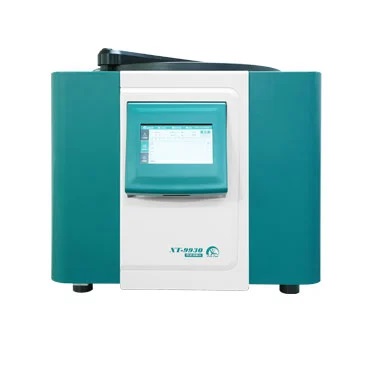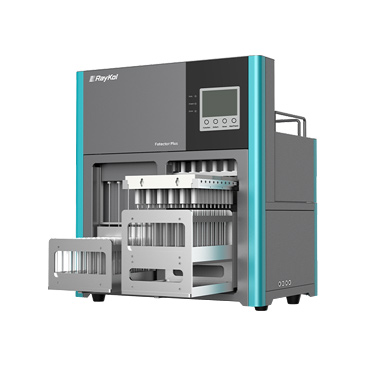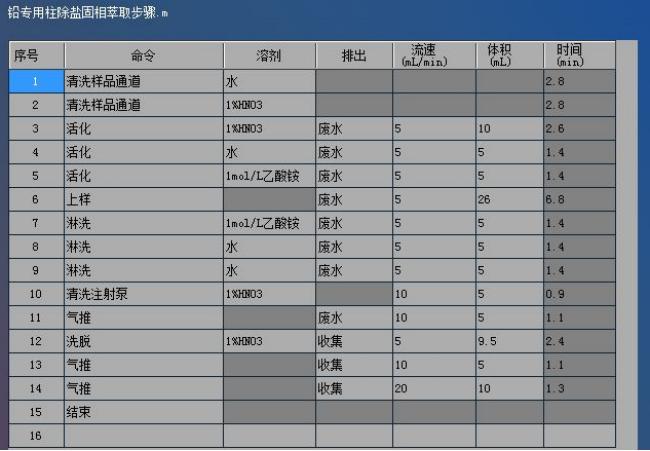Lead is a cumulative heavy metal. The interaction between lead and -SH groups in the human body can cause clinical symptoms such as hemoglobin deficiency anemia. Long-term intake can damage the blood system and the nervous system of the human body. On March 6, 2024, the national food safety standard "Determination of Lead in Food" (GB 5009.12-2023) will be implemented. It includes the sample pretreatment method for salt removal in the first method of Graphite Furnace Atomic Absorption Spectrometry, which involves using microwave digestion-solid phase extraction to remove salt from samples like table salt, pickled foods, and hot pot base before analysis.
Referring to method B in the national standard appendix, RayKol has newly launched the RayCure IDC lead-specific column (Iminodiacetic Acid type chelating resin solid phase extraction column, item No.: RC-204-IDC01), which can effectively enrich lead ions and remove sodium and potassium ions from high-salt foods.
After the sample is digested, it is atomized in a graphite furnace, and the absorbance is measured at 283.3nm. The absorbance value within a certain concentration range is proportional to the lead content, which is quantitatively compared to the standard series.

XT-9930 Sealed Intelligent Microwave Digestion Instrument
1. Weigh out solid samples 0.2g~3g (accurate to 0.001g) or accurately transfer liquid samples 0.50mL~5.00mL into the microwave digestion tank. Samples containing ethanol or carbon dioxide should be gently heated on an electric hot plate to remove ethanol or carbon dioxide.
2. Add 10mL of nitric acid, and digest the sample according to the microwave digestion temperature rise program shown in Table 1 (reasonable adjustments can be made based on the instrument model).
Table 1 Microwave Digestion Temperature Rise Program
Step | Setting Temperature °C | Heating Time min | Constant Temperature Time min |
1 | 120 | 6 | 4 |
2 | 160 | 5 | 3 |
3 | 180 | 5 | 15 |
3. After cooling, take out the digestion tank and heat it on an electric hot plate at 140°C~160°C until almost dry for about 2 hours.
4. After cooling, wash the digestion tank with sodium acetate solution (2mol/L) 2-3 times and combine the washing liquid in a 25mL volumetric flask. Dilute to the mark with sodium acetate solution (2mol/L), mix well, and reserve. The pH of the solution after dilution should be 4.5~6.5. Simultaneously, perform a reagent blank test.
Note: You can test the pH value with pH paper. If the pH value is below 4.5, it is recommended to add 10M sodium hydroxide solution dropwise to ensure the pH is within the range of 4.5-6.5.

Fotector Plus High-throughput Fully Automated Solid Phase Extraction Instrument
Consumables: RayCure IDC Lead-Specific Column (Iminodiacetic Acid type chelating resin solid phase extraction column, item No.: RC-204-IDC01);
Column Pretreatment: Remove the solid phase extraction column, open the lower end stopper, and drain the storage solution (storage solution is 20% ethanol).
Activation: Pass 10mL of nitric acid solution (1+99) through the column at a flow rate of 5mL/min, then pass 5mL of water and 5mL of ammonium acetate solution (1mol/L) through the column at a flow rate of 5mL/min, and discard the eluate.
Sample Loading: Draw 25mL of reagent blank solution and the digested.
Washing: Use 5 mL of ammonium acetate solution (1 mol/L) to wash the column, then use 10 mL of water to wash away the ammonium acetate solution (1 mol/L) twice, and discard the column liquid;
Elution: Use 10 mL of nitric acid solution (1+99) to elute, collect the eluate, and wait for testing.

Atomic absorption spectrophotometer: equipped with graphite furnace atomizer and lead hollow cathode lamp. Instrument conditions are shown in Table 2. Atomic absorption spectrophotometer conditions.
Table 2: Atomic absorption spectrometer conditions
| Element | Wavelength/nm | Crack/nm | Lamp current/mA | dry | Ashing | Atomization |
| Lead | 283.3 | 0.5 | 8~12 | 85℃~120℃/40s~50s | 750℃/20s~30s | 2300℃/4s~5s |
Results of Lead Content Test in Edible Salt (n=3)
| Actual samples | Target compound | Added Amount:mg/kg | Average Recovery rate% | RSD % |
| Salt | lead | 0.5 | 91.8 | 3.4 |
In this experiment, RayCure IDC lead-specific column was used in combination with atomic absorption spectrometer to determine the lead content in edible salt. The results showed that at the spike level of 0.5 mg/kg, the recovery rate of lead in edible salt was 91.8%, and the RSD value was less than 5%, which met the standard requirements.
Applicable Standards
GB 5009.12-2023 National Food Safety Standard Determination of Lead in Food Method 1 Graphite furnace atomic absorption spectrometry is suitable for the extraction and detection of lead in high-salt foods such as salt, soy sauce, pickled food, hot pot base and instant noodle salt packets.
Consumables Ordering Information
| Part Number | Product Description | ||||
| RC-204-IDC01 | Solid phase extraction column: RayCure IDC lead-specific column 1mL, 25/pk | ||||